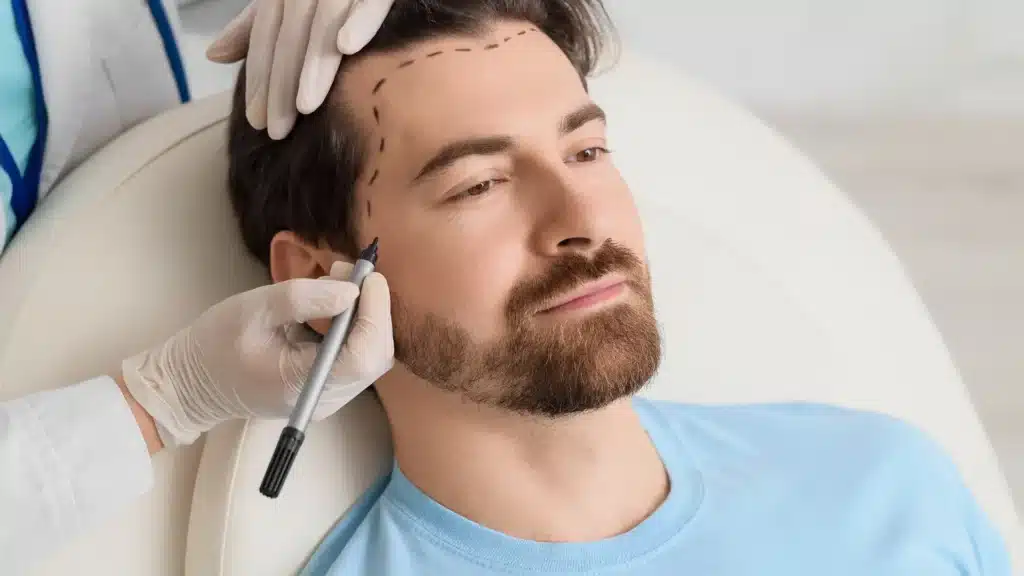Hair transplant procedures have become increasingly common among people seeking a permanent solution to hair loss. From men facing male pattern baldness to women with thinning hair, the appeal of natural-looking and long-lasting results makes this cosmetic treatment a popular choice.
However, just like any surgical procedure, it comes with potential complications that patients should understand before committing. Especially for those considering a Turkey hair transplant, awareness of possible risks and how to prevent them is crucial to ensuring a successful outcome and a safe recovery journey.
Understanding Hair Transplant Risks
A hair transplant involves removing healthy hair follicles from a donor area, typically the back or sides of the scalp, and implanting them in balding or thinning areas. The two main techniques used are Follicular Unit Extraction (FUE) and Follicular Unit Transplantation (FUT). While both methods are safe when performed by qualified surgeons, inexperienced practitioners or poorly equipped clinics can expose patients to unnecessary risks.
Complications can arise from inadequate hygiene, excessive trauma to the scalp, or improper post-surgery care. The good news is that most of these issues are preventable through careful clinic selection and adherence to post-operative guidelines.

1. Infection After Surgery
Infections occur when bacteria enter the small incisions made during the transplant. Signs may include redness, swelling, or pus in the treated area. This usually happens when sterile conditions aren’t maintained or when aftercare instructions are ignored.
How to Avoid It:
- Select a reputable clinic that follows strict sterilization protocols.
- Keep your scalp clean as advised by your surgeon.
- Avoid touching the treated area with unwashed hands.
- Use antibiotics if prescribed to prevent bacterial growth.
2. Bleeding and Swelling
Mild bleeding after surgery is normal, but excessive bleeding can indicate improper surgical technique. Swelling, particularly around the forehead and eyes, can occur due to fluid retention following surgery.
How to Avoid It:
- Avoid blood-thinning medications and alcohol before the procedure.
- Apply cold compresses gently to minimize swelling.
- Sleep with your head elevated for several days post-surgery.
- Follow your doctor’s pre- and post-operative care plan.
3. Poor Graft Survival
Not every transplanted hair graft survives. Poor handling, dehydration, or overheating of grafts before implantation can lead to low survival rates and patchy growth.
How to Avoid It:
- Choose a surgeon experienced in advanced graft preservation methods.
- Refrain from smoking and alcohol to improve blood circulation.
- Protect your scalp from direct sunlight and sweat during recovery.
4. Scarring and Uneven Hairline
Visible scarring is common with the FUT method, where a strip of skin is removed. FUE, on the other hand, may leave tiny circular scars if not performed properly. Uneven or artificial-looking hairlines often result from poor planning or inexperienced execution.
How to Avoid It:
- Review before-and-after photos of previous patients.
- Discuss your ideal hairline shape during consultation.
- Opt for clinics known for aesthetic precision and artistry.
5. Shock Loss
Shock loss refers to temporary shedding of transplanted or existing hair due to trauma during the procedure. It can occur within weeks after surgery but usually reverses over time.
How to Avoid It:
- Follow a nutrient-rich diet to aid recovery.
- Take any prescribed medications such as minoxidil if recommended.
- Stay patient, as hair typically regrows after the shock phase subsides.
6. Numbness and Itching
Temporary numbness and itching are normal sensations as nerves heal and the scalp adjusts. However, prolonged numbness may indicate nerve irritation, while scratching can damage grafts and lead to infection.
How to Avoid It:
- Use only the moisturizers or shampoos recommended by your clinic.
- Pat the area gently instead of scratching.
- Consult your surgeon if numbness persists beyond a few weeks.
7. Folliculitis
Folliculitis is an inflammation of hair follicles, often appearing as red bumps or small pimples around grafts. This can happen when new hairs begin to grow or when bacteria infect healing follicles.
How to Avoid It:
- Keep the scalp clean and oil-free.
- Avoid tight headwear and heavy sweating.
- Apply mild antiseptic creams if prescribed.
8. Unnatural Appearance
An unnatural appearance can result from poor design, incorrect graft placement, or using outdated techniques that create a “pluggy” look. In some cases, technicians rather than surgeons perform key parts of the surgery, leading to inconsistent results.
How to Avoid It:
- Choose clinics where certified surgeons personally conduct the procedure.
- Prioritize those specializing in natural hairline restoration.
- Ask for a detailed treatment plan before surgery begins.
9. Allergic Reactions
Although uncommon, allergic reactions may occur due to anesthesia, antiseptics, or certain medications used during the process. Symptoms might include rash, itching, swelling, or dizziness.
How to Avoid It:
- Disclose all known allergies during your consultation.
- Request a patch test if you are sensitive to specific medications.
- Report any unusual symptoms immediately to your doctor.
10. Emotional and Psychological Stress
A hair transplant can be emotionally demanding. Patients often experience anxiety during the initial healing phase, especially when temporary shedding occurs. Unrealistic expectations may lead to disappointment even when results are medically successful.
How to Avoid It:
- Have realistic expectations about growth timelines.
- Communicate openly with your surgeon about results.
- Join online patient forums or support groups to stay positive during recovery.
11. Importance of Choosing the Right Clinic
Your choice of clinic determines nearly all aspects of safety and success. Many people are drawn to countries like Turkey for affordable and high-quality procedures, but it’s vital to differentiate between reputable institutions and unsafe operators. Clinics with transparent pricing, certified surgeons, and patient-centered approaches consistently produce better outcomes.
How to Avoid It:
- Verify the credentials and certifications of your surgeon.
- Ensure the clinic maintains international hygiene and safety standards.
- Read verified reviews and testimonials before booking.
- Avoid unrealistic promises or deals that seem too good to be true.
Those considering getting a Turkey hair transplant should invest time in proper research and seek clinics that value quality over cost. Turkey’s reputation as a global hub for hair restoration is well-earned, but safety and medical ethics must always come first. By understanding these potential risks and taking preventive measures, patients can experience natural, lasting, and confidence-boosting results.



